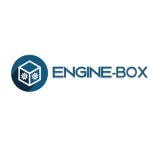List of Best Engineering Industry Software
Showing 10 of 15 productsAcme Insight is a software designed to streamline and simplify business operations. With its powerful features and user-friendly interface, Acme Insight revolutionizes the way businesses manage their processes, saving time, effort, and resources. Sta...Read Acme Insight Reviews
AUGmentecture is a solution for architects, engineers, and designers looking to revolutionize the way they visualize and present their projects. With its innovative features and user-friendly interface, AUGmentecture seamlessly integrates augmented r...Read AUGmentecture Reviews
BigTime is a solution for managing your businesss time and resources. With its user-friendly interface and innovative features, BigTime streamlines project management, billing, and reporting in one efficient platform. Say goodbye to tedious tasks and...Read BigTime Reviews
Simcad Pro is a software solution designed to streamline and optimize complex business processes. With its advanced simulation capabilities, data analysis tools, and user-friendly interface, Simcad Pro empowers businesses to enhance efficiency, reduc...Read Simcad Pro Reviews
Engine-Box is a solution for managing and optimizing your businesss engine performance. Engine-Box is packed with innovative features and user-friendly design to help your business thrive. Say goodbye to complicated engine management systems and hell...Read Engine-Box Reviews
Typo, the innovative new software that will revolutionize the way you write. Designed with simplicity and efficiency in mind, Typo is a writing tool for both personal and professional use. Say goodbye to pesky typos and hello to polished, error-free...Read Typo Reviews
QuiqRP ERP is a solution for streamlining your business operations. With its user-friendly interface features, QuiqRP simplifies complex tasks and optimizes your workflow. Say goodbye to tedious manual processes and hello to efficiency and productivi...Read QuiqRP ERP Reviews
QuoteCAD Manufacturing is a software designed to revolutionize the manufacturing industry. With its advanced features and user-friendly interface, this software streamlines the production process, making it easier and more efficient. Say goodbye to m...Read QuoteCAD Manufacturing Reviews
Iolite IPMS is a property management solution designed to streamline your operations and boost efficiency. From managing multiple properties to automating tasks, Iolite IPMS offers a range of features to simplify your property management process. Sta...Read Iolite IPMS Reviews
Magic is a latest software that brings enchantment to your fingertips. With its innovative technology, Magic allows you to harness the power of spells and incantations to create a truly mesmerizing experience. From casting illusions to unlocking hidd...Read Magic Reviews
- What Is Engineering Industry Software?
- Top Reasons Why Businesses Need Engineering Industry Software?
- What Are the Top Key Features of Engineering Industry Software?
- What Are the Top Benefits of Engineering Industry Software?
- What Are the Steps to Choose the Right Engineering Industry Software?
- What Are the Types of Engineering Industry Software for Different Industries?
- What Are the Technology Trends for Best Engineering Industry Software?
- What Are the Deployment Options for Engineering Industry Software?
What Is Engineering Industry Software?
Engineering industry software refers to a specialized category of computer programs that are specifically developed to assist engineers in the analysis and design of various engineering projects. Engineers employ various software applications to generate models for the purpose of visualizing and analyzing the constituent elements of an engineering project.
This enables them to verify compliance with safety standards and execute engineering projects with precision. The primary objective of engineering software is to enhance the precision and efficiency of engineering procedures.
The primary classifications of engineering software are computer-aided design (CAD) software, computer-aided engineering (CAE) software, and product lifecycle management (PLM) software. Computer-aided design (CAD) software is employed for the purpose of generating both two-dimensional (2D) and three-dimensional (3D) representations of engineering designs.
CAD software is utilized by engineers for the purposes of project measurement, testing, and design. Computer-aided engineering (CAE) software is employed to replicate engineering endeavors with the aim of assessing their safety, stability, and performance. Product Lifecycle Management (PLM) software facilitates the effective management of several elements within the design process, spanning from initial conception to finalization.
In addition to the fundamental engineering software, there are supplementary categories of engineering software, including visualization and simulation software, analytical software, and scripting software. The utilization of visualization and simulation technologies enables engineers to efficiently engage in iterative experimentation with many design alternatives.
The utilization of the best engineering industry software enables the rapid and precise execution of calculations and data analysis. Scripting software provides developers with the capability to automate various activities and develop personalized applications.
Top Reasons Why Businesses Need Engineering Industry Software?
1. Streamlines Design and Manufacturing Processes: Software used in the engineering business streamlines the design and manufacturing procedures, enabling companies to expedite the production of superior quality goods with enhanced efficiency.
2. Facilitates Automated Processing: The utilization of software in the engineering industry facilitates the automation of specific procedures, hence empowering enterprises to rapidly expand their operation management in order to effectively cater to consumer requirements.
3. Improves Design Quality: The utilization of the best engineering industry software enables organizations to generate intricate designs, thereby significantly enhancing the overall quality of their products.
4. Enhances Cross-Functional Communication: The software utilized in the engineering business facilitates a platform that enables effective communication across many functional units, including engineering, production, and other relevant teams.
5. Optimizes Logistics Systems: The utilization of engineering industry software enables organizations to enhance the efficiency of their logistics systems, thereby ensuring the timely and cost-effective delivery of products.
6. Enhances Performance Analysis: The utilization of software in the engineering business facilitates comprehensive performance analysis, enabling companies to engage in a continual process of enhancing their operational procedures.
7. Improves Inventory Management: The utilization of top engineering industry software facilitates the inventory management and enhances the efficiency of order fulfillment inside firms.
8. Creates Quality Documentation: The utilization of software in the engineering business facilitates the production of high-quality documentation, including technical drawings and product specifications.
9. Increases Productivity: The utilization of top engineering industry software enables organizations to optimize their resources, hence allocating time and effort towards other activities.
10. Improves Safety: Software utilized in the engineering business has the capacity to facilitate the identification of prospective safety issues, hence safeguarding workers against preventable mishaps.
11. Expands Business Connections: The utilization of software in the engineering business facilitates the expansion of brands into previously untapped markets and enables the establishment of valuable connections with influential stakeholders.
12. Optimizes Maintenance and Service: Software used in the engineering business plays a crucial role in facilitating regular and proper maintenance and servicing of equipment.
13. Facilitates Quality Control: The utilization of software within the engineering business facilitates the monitoring of product quality, so enabling organizations to ensure that their offerings align with client expectations.
14. Improves Cost Savings: The utilization of engineering industry software enables organizations to effectively mitigate their total operational expenses and enhance their overall profitability.
15. Facilitates Customer Relations: The utilization of software within the engineering business facilitates enhanced customer interaction and the monitoring of client satisfaction.
What Are the Top Key Features of Engineering Industry Software?
The top key features of engineering industry software are:
1. Modeling and Simulation: The objective of this study is to create accurate virtual representations of engineering processes in order to forecast performance outcomes and detect potential issues.
2. Visualization: The creation of graphical models is employed to enhance the comprehension of data and processes, hence facilitating more informed decision-making.
3. Data Analytics: The application of data analytics is employed to gather, manipulate, scrutinize, and elucidate substantial volumes of data with the aim of enhancing operational efficiency.
4. Collaboration: Enabling teams to effectively engage remotely by facilitating seamless data sharing, cross-device compatibility, feedback provision, and collaborative efforts.
5. Automation: The implementation of automation in engineering processes, including design, testing, and validation, serves to enhance precision, productivity, and temporal economy.
6. Integration: The process of incorporating top engineering industry software into pre-existing systems and applications in order to enhance dataflows and streamline procedures.
7. Cost Tracking: The objective is to monitor and analyze expenses in engineering endeavors, while concurrently streamlining operational processes to save expenditures and enhance finance management.
8. Report Generation: Develop and produce reports for the purpose of assessing and analyzing performance, as well as identifying potential areas for improvement.
What Are the Top Benefits of Engineering Industry Software?
1. Cost Savings: The utilization of engineering industry software facilitates the optimization of company operations and the reduction of expenses, hence leading to the enhancement of operational processes and the improvement of overall efficiency in terms of financial performance.
2. Increased Productivity: Software solutions facilitate the automation of many operations, thereby empowering engineers to allocate their attention towards more valuable activities and optimizing the overall workflow.
3. Quality Improvement: The utilization of robotics and automation in engineering facilitates the production of superior-quality products characterized by enhanced precision and dependability.
4. Collaboration: The utilization of software in the engineering business enables enhanced collaboration among several departments, hence enabling engineers to effectively exchange design models and information.
5. Increased Efficiency: The implementation of automation and simulation techniques in conventional engineering processes has the potential to enhance efficiency, precision, and the generation of comprehensive outcomes.
6. Safety: Numerous software solutions utilized in the engineering sector incorporate automated risk management and safety protocols, thereby contributing to the maintenance of personnel and facility safety.
7. Improved Information Access: With the advent of real-time information access, engineers are now able to perform procedures without relying on manual input.
8. Accurate Forecasting: The utilization of technology enables engineers to make precise projections regarding project timelines and material expenses, hence resulting in enhanced project outcomes.
9. Streamlined Decisions: The implementation of automation in decision-making processes results in expedited decision-making procedures and enhanced precision.
10. Predictive Maintenance: Engineers may effectively manage the maintenance of their machinery and equipment by utilizing the best engineering industry software, which enables them to coordinate tasks in a timely manner while also optimizing costs.
What Are the Steps to Choose the Right Engineering Industry Software?
1. The identification of the particular software requirements and operational obstacles that necessitate resolution. The inclusion of specific regulations that the software must adhere to, the provision of project management tools, and the desired levels of connectivity with existing platforms should be considered.
2. The task at hand involves conducting comprehensive research on the many software solutions available in the engineering business. This research will encompass both primary and secondary sources of information. At this juncture, the objective is to ascertain the desired attributes present in the existing offers while evaluating the advantages, user-friendliness, and cost framework.
3. Conduct a comparative analysis of the different possibilities in order to ascertain the most suitable choice that aligns with the requirements of the organization. The comparison should be centered around the needs that have been defined in the initial step.
4. In order to enhance understanding of the selected software and its alignment with the organization's requirements, it is advisable to seek guidance from professionals in the field. This will enable the company to get further knowledge and expertise on how the software specifically caters to its unique demands.
5. Develop a strategic implementation strategy for the program, commencing with a preliminary period of experimentation and comprehensive user instruction.
6. The program should be subjected to a continuous feedback and evaluation process, wherein performance indicators and benchmarking data are utilized to assess its performance.
What Are the Types of Engineering Industry Software for Different Industries?
Engineering sector software refers to a collection of specialized software applications and tools that are utilized by engineers and other professionals across many industries.
Top engineering industry software encompasses a wide array of tools, such as computer-aided design (CAD) and computer-aided manufacturing (CAM) technology, finite element analysis (FEA) software, project management tools, product lifecycle management (PLM) software, engineering analysis software, remote condition monitoring, and various other applications.
CAD and CAM technologies are commonly employed in the field of product design for the purpose of 3D modeling and simulation. On the other hand, FEA, which stands for Finite Element Analysis, is a mathematical modeling software that is utilized to forecast the response of things to various physical alterations and forces.
Project management software is utilized for the purpose of maintaining team organization, whereas product lifecycle management software is employed to effectively arrange data pertaining to product design, production, and operational processes. Engineering analysis software offers a range of tools that facilitate the analysis, simulation, and optimization of design performance.
Additionally, remote condition monitoring systems empower engineers to remotely monitor the operation of equipment. In summary, the field of engineering industry software comprises a diverse range of software programs and technologies utilized by engineers across several industries.
In the engineering business, several types of software are frequently utilized, including CAD and CAM technologies, finite element analysis software, project management tools, product lifecycle management software, engineering analysis software, and remote condition monitoring systems.
What Are the Technology Trends for Best Engineering Industry Software?
The technology trends for best engineering industry software are as follows:
1. Cloud Computing - Cloud computing has gained significant popularity as a viable solution within the engineering business, enabling organizations to conveniently access data and applications from any geographical location throughout the globe.
By enhancing security measures and increasing flexibility, it enables the achievement of cost efficiency and accelerated development processes.
2. Automation - The utilization of automation is increasingly prevalent within the domain of engineering. This facilitates expedited development durations, enhanced procedure efficiency, and heightened precision.
3. Mobile Technology - The proliferation of mobile devices has enabled engineers to conveniently access data and apps from any location throughout the globe. This feature facilitates instantaneous cooperation and expedites the process of creation.
4. AI and Machine Learning - The utilization of artificial intelligence (AI) has facilitated the expedited and precise collection, analysis, and interpretation of data. The utilization of machine learning techniques enables the identification of patterns within datasets and facilitates the generation of predictive models.
5. Modelling and Simulation - The utilization of modelling and simulation software is experiencing a growing trend within the engineering sector. These enable the implementation of more economically efficient testing and prototyping processes for designs.
What Are the Deployment Options for Engineering Industry Software?
When implementing top engineering industry software, there exist various alternatives for deployment, such as on-premise (self-managed) deployment, private cloud deployment, hybrid deployment, and public cloud deployment.
1. The deployment method known as on-premise entails the hosting of software on pre-existing hardware and networks. This approach serves to simplify the system and provides increased control over its operations.
The implementation of a private cloud necessitates the utilization of a distinct cloud infrastructure overseen by the engineering firm, affording the organization full autonomy and enabling the tailoring of the system to meet specific requirements.
2. The hybrid cloud deployment strategy integrates both on-premise and cloud resources to effectively meet the operational requirements of a company. This approach offers the advantages of adaptable scalability and potential cost reduction.
3. Public cloud deployment has the advantage of scalability and cost reduction due to the shared utilization of resources among multiple users inside the cloud environment.
Through the utilization of public cloud deployment, organizations have the ability to leverage a vendor's platform and solely incur costs for the specific resources that are required.










